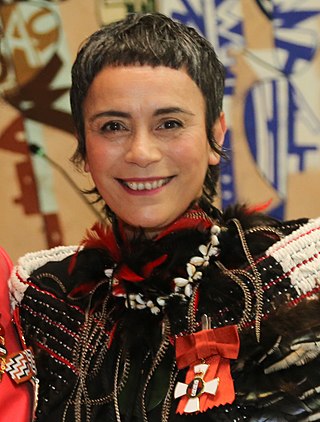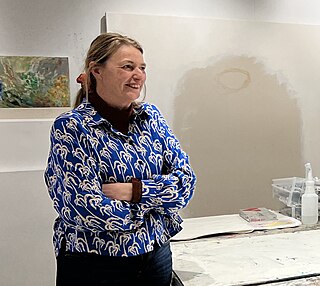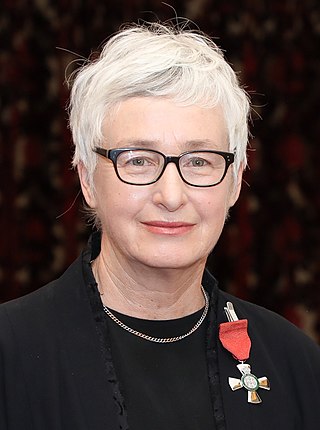
Shane William Cotton is a New Zealand painter whose work explores biculturalism, colonialism, cultural identity, Māori spirituality, and life and death.

Shigeyuki "Yuki" Kihara is an interdisciplinary artist of Japanese and Samoan descent. In 2008, her work was the subject of a solo exhibition at the Metropolitan Museum of Art in New York; it was the first time a New Zealander and the first time a Pacific Islander had a solo show at the institution. Titled Shigeyuki Kihara: Living Photographs, the exhibition opened from 7 October 2008 to 1 February 2009. Kihara's self-portrait photographs in the exhibitions included nudes in poses that portrayed colonial images of Polynesian people as sexual objects. Her exhibition was followed by an acquisition of Kihara's work for the museum's collection.
Wayne Youle is a New Zealand artist of Ngāpuhi, Ngati Whakaeke and Ngati Pākehā descent. His bicultural heritage is reflected in his work, addressing issues of identity, race and the commodification of cultural symbols. He often uses humour to make his point. Youle's work is held in national museums and public galleries. He lives and works in Amberley, New Zealand.

Fiona Dorothy Pardington is a New Zealand artist, her principal medium being photography.

Jacqueline Mary Fahey is a New Zealand painter and writer.

Ronnie van Hout is a New Zealand artist and musician living in Melbourne, Australia. He works across a wide variety of media including sculpture, video, painting, photography, embroidery, and sound recordings.

Vivian Isabella Lynn was a New Zealand artist.
Pauline Rhodes is a New Zealand artist. Rhodes is known for her artworks related to the landscape, which take two forms: outdoor works, in which she makes minimal sculptural interventions in the landscape, which exist only through her documentation, and sculptural installations in gallery spaces, which are conceptually related to the outdoor works.
Jacqueline Fraser is a New Zealand artist of Ngāi Tahu descent.

Maureen Robin Lander is a New Zealand weaver, multimedia installation artist and academic. Lander is a well-respected and significant Māori artist who since 1986 has exhibited, photographed, written and taught Māori art. She continues to produce and exhibit work as well as attend residencies and symposia both nationally and internationally.

Lisa Marie Reihana is a New Zealand artist. Her video work, In Pursuit of Venus [Infected] (2015), which examines early encounters between Polynesians and European explorers, was featured at the 2017 Venice Biennale.

Séraphine Pick is a New Zealand painter. Pick has exhibited frequently at New Zealand public art galleries; a major survey of her work was organised and toured by the Christchurch Art Gallery in 2009–10.
Joanna Margaret Paul was a New Zealand visual artist, poet and film-maker.
Lonnie Hutchinson is a New Zealand artist of Māori, Samoan and European descent.

Christina Joy Barton, known as Tina Barton, is a New Zealand art historian, curator, art writer and editor. She was director of the Adam Art Gallery between 2007 and 2023.
Gavin John Hipkins is a New Zealand photographer and film-maker, and Associate Professor at Elam School of Fine Arts, at the University of Auckland.
Ann Shelton is a New Zealand photographer and academic.

Shannon Te Ao is a New Zealand artist and writer. He won the 2016 Walters Prize.
Heather Straka is a New Zealand artist, based in Auckland, who primarily works with the media of painting and photography. Straka is well known as a painter that utilises a lot of detail. She often depicts cultures that are not her own, which has caused controversy at times. Her work engages with themes of economic and social upheaval in interwar China, the role of women in Arabic society and Māori in relation to colonisation in New Zealand. Eventually, the figure became important in Straka's practice and she began to use photographs as the starting point for some of her works and "Increasingly too the body feminine has become her milieu".

Marilyn Rea-Menzies is a New Zealand artist, principally known for her tapestry work, but who also exhibits drawing, painting, and digital print. She is considered one of New Zealand's leading textile artists.













